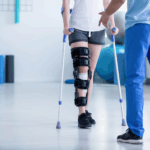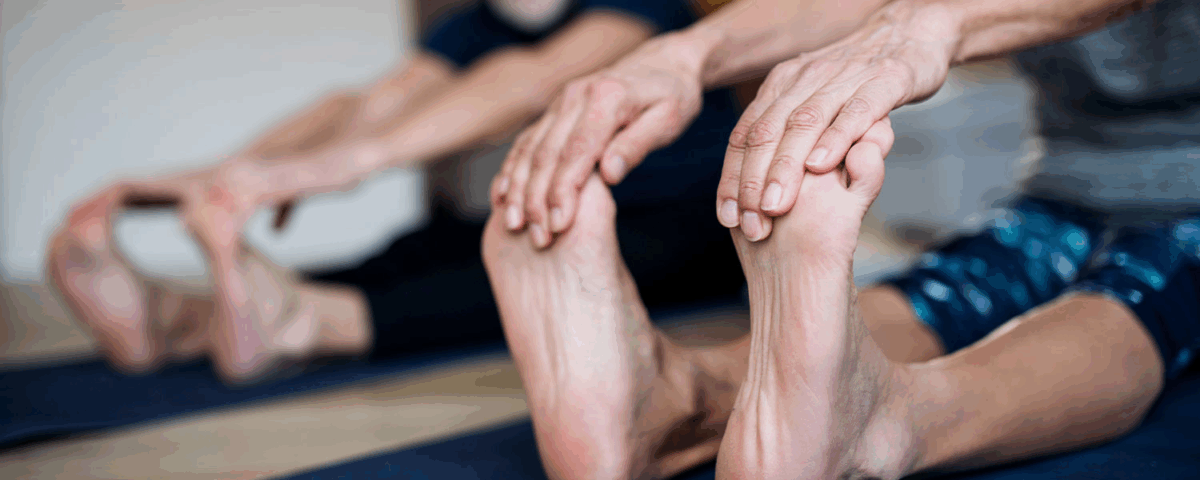
Best Orthopedic Hospitals for Sports Injury Recovery
August 12, 2025
Physical Therapy Exercises for Faster Injury Recovery
August 12, 2025Maintaining joint flexibility is essential for healthy movement, preventing injuries, and improving overall quality of life. Whether you’re young, aging, recovering from an injury, or managing a chronic condition like arthritis, keeping your joints flexible can make a big difference in how you feel and function daily.
Orthopedic specialists, who focus on the musculoskeletal system, often recommend specific exercises designed to enhance joint flexibility safely and effectively. In this article, we’ll explore why joint flexibility matters, the best orthopedics-approved exercises to improve it, and practical tips to incorporate these exercises into your routine. You’ll also find answers to common questions to help you stay informed and motivated.
Why Is Joint Flexibility Important?
Joint flexibility refers to the ability of a joint to move through its full range of motion without pain or stiffness. Good flexibility:
- Enhances mobility and ease of movement
- Reduces the risk of joint injuries
- Improves posture and balance
- Helps manage symptoms of arthritis and other joint conditions
- Supports muscle strength and coordination
As we age, natural wear and tear, inactivity, or injuries can reduce joint flexibility, leading to stiffness, pain, and limited function. That’s why orthopedic experts emphasize regular flexibility exercises to maintain joint health.
What Are Orthopedics-Approved Exercises?
Orthopedics-approved exercises are those recommended by orthopedic doctors, physical therapists, and specialists because they are safe, effective, and tailored to protect your joints. These exercises help stretch and strengthen the muscles and tissues around joints, improving flexibility without causing damage.
Best Orthopedics-Approved Exercises for Joint Flexibility
1. Shoulder Pendulum Stretch
- Why it helps: Gently loosens the shoulder joint and increases range of motion.
- How to do it:
- Stand next to a table and place one hand on it for support.
- Let your other arm hang down relaxed.
- Slowly swing your arm in small circles or back and forth, gradually increasing the size.
- Perform for 1-2 minutes, then switch arms.
- Stand next to a table and place one hand on it for support.
2. Cat-Cow Stretch (Spine Flexibility)
- Why it helps: Increases flexibility in the spine and relieves tension in the back.
- How to do it:
- Start on hands and knees in a tabletop position.
- Inhale, arch your back downwards (cow position), lifting your head and tailbone.
- Exhale, round your spine upwards (cat position), tucking your chin and pelvis.
- Repeat 10-15 times slowly.
- Start on hands and knees in a tabletop position.
3. Hip Flexor Stretch
- Why it helps: Stretches muscles around the hip joint, improving mobility and reducing stiffness.
- How to do it:
- Kneel on one knee with the other foot in front, forming a 90-degree angle at both knees.
- Gently push your hips forward while keeping your back straight until you feel a stretch in the front of your hip.
- Hold for 20-30 seconds, then switch sides.
- Kneel on one knee with the other foot in front, forming a 90-degree angle at both knees.
4. Wrist Flexor and Extensor Stretch
- Why it helps: Improves wrist joint flexibility, important for daily activities.
- How to do it:
- Extend one arm in front of you with the palm facing down.
- Use your other hand to gently pull the fingers down towards the floor (wrist flexor stretch).
- Then, pull the fingers upward for the wrist extensor stretch.
- Hold each stretch for 15-20 seconds, then switch arms.
- Extend one arm in front of you with the palm facing down.
5. Ankle Circles
- Why it helps: Enhances ankle joint flexibility and circulation.
- How to do it:
- Sit or lie down and lift one foot slightly off the ground.
- Slowly rotate your ankle in circles, 10 times clockwise and 10 times counterclockwise.
- Repeat with the other ankle.
- Sit or lie down and lift one foot slightly off the ground.
6. Seated Hamstring Stretch
- Why it helps: Stretches the muscles behind your thighs, reducing tension on the knees and hips.
- How to do it:
- Sit on the floor with one leg extended straight and the other bent with the sole touching the inner thigh.
- Reach forward toward your toes on the extended leg, keeping your back straight.
- Hold for 20-30 seconds, then switch legs.
- Sit on the floor with one leg extended straight and the other bent with the sole touching the inner thigh.
Tips for Safe and Effective Flexibility Training
- Warm up first: Always start with a light warm-up like walking or gentle movements to prepare your joints and muscles.
- Avoid bouncing: Use slow, controlled movements to stretch muscles and joints to avoid injury.
- Breathe deeply: Inhale and exhale slowly to help muscles relax during stretches.
- Listen to your body: Stretch only to the point of mild tension, never sharp pain.
- Be consistent: Flexibility improves gradually, so aim for regular sessions (3-5 times per week).
When to Consult an Orthopedic Specialist
If you experience persistent joint pain, swelling, or difficulty moving despite regular exercise, it’s important to seek professional advice. An orthopedic specialist can evaluate your joint health, recommend tailored exercises, and provide treatments if needed.
5 FAQs About Orthopedics-Approved Exercises for Joint Flexibility
1. How often should I do flexibility exercises?
Aim for 3-5 days per week, incorporating stretches into your routine to see noticeable improvements.
2. Can flexibility exercises help with arthritis?
Yes, gentle stretching improves joint mobility, reduces stiffness, and can ease arthritis symptoms.
3. Are these exercises suitable for all ages?
Most flexibility exercises are safe for all ages but may need modifications based on individual health conditions.
4. How soon can I expect results?
With regular practice, many people notice improved flexibility and reduced stiffness within a few weeks.
5. Should I combine flexibility exercises with strength training?
Yes, combining flexibility and strength exercises supports joint stability and overall function.
Final Thoughts
Joint flexibility is a key factor in maintaining mobility, preventing injuries, and enjoying an active lifestyle. Orthopedics-approved exercises offer safe, effective ways to keep your joints healthy and flexible, whether you’re managing a condition or simply want to feel better every day.
By incorporating these simple stretches and movements into your routine, listening to your body, and seeking professional guidance when necessary, you can take charge of your joint health and improve your quality of life.





